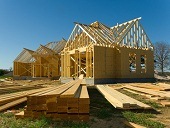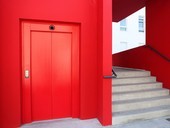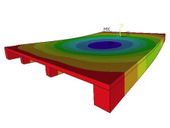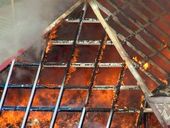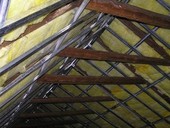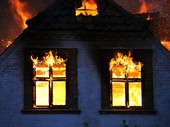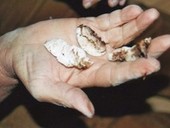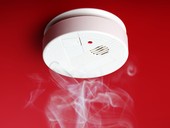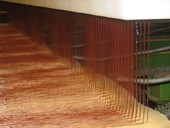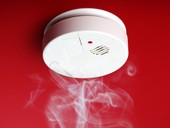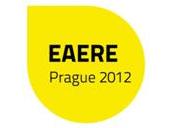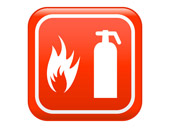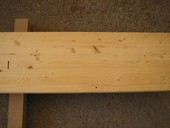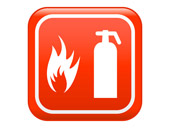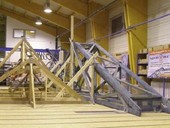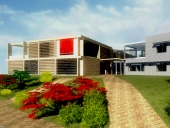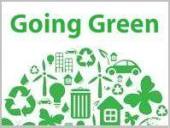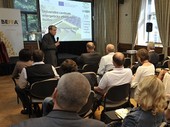Rating of LEED has clearly favored FSC certification (Forest Stewardship Council) over the other, let's say competing types of national and international certification of wood. Critics point to the FSC for example, that in principle there is no clearly identified reason for the creation of an evaluation standard.
Archiv článků od 18.6.2012 do 6.8.2012
Elevators belong to a very important building services and technologies. For these reasons, they need to pay attention not only in terms of proper technical implementation, but also in terms of fire safety. In particular, fire and evacuation lifts, which are also very important fire safety devices (hereinafter referred to as "PBZ") must also meet the stringent technical requirements of fire protection. In the first part we deal with the terminology and technical requirements.
The object of this work is a numerical analysis of the behavior of wood-concrete composite ceiling structure, consisting of concrete slab and wooden beams of glued laminated timber. The main objective is to explore the use of concrete slabs, which assists with wooden beams, and using models in ANSYS to investigate its behavior in the load floor construction. The accuracy of numerical analysis of wood-concrete structure fully depends on the material models. Therefore the material models will be later verified by experimental results.
In addressing the fire safety of buildings it is necessary to know the value of fire resistance of building products and constructions of building and to design constructions, which meet required fire resistance values. It is necessary to distinguish two categories of elements: building products and construction.
Sloping roofs have been being built for centuries. Until recently, these roofs had only one purpose - to protect the building from rainwater, snow or other climatic influences. Let's look more closely at the current issue of excessive moisture in the roofs and let's show with pictures some specific examples.
Determination of the development of fire in the compartment with subsequent detection of temperature in different parts of the structure requires knowledge of many parameters. The most important step is to determine the design fire scenario that matches the extraordinary fire situation best. The design of fire can describe the temperatures in the fire department and determine the heat transfer in structure. Let's look at several models and the thermal and mechanical load of structures.
Changes in humidity of original wooden structure after the additional thermal insulation of building
Thermal insulation of prefabricated panel buildings is shifting to residential houses built on a brick in at the end of the 19th century and the beginning of the 20th century. These houses usually have an unheated basement with brick arches or wooden beam ceiling. Insulation of envelope and leaving the original heating system leads to a change in the internal climate and causing secondary faults.
At the conference about design of the EPS on 22 Third 2012, organized during the Amper exhibition in Brno 2012, one of the standard processors announced that they will release a change of the standard ČSN 34 2710. It is therefore desirable to discuss the specific topics to solve the most pressing issues related to this standard. In this article I present a proposal for 18 major changes. The second part is called Draft for changes of the standard.
Development of construction industry requires the development of improved properties of various materials. Innovation material properties provide cost advantages over conventional solutions, and can also bring greater flexibility in the construction. The construction applies a wide range of traditional materials, including plywood boards.
Issue of the new standard ČSN 34 2710 for an electric fire alarm raised many questions. The birth of standard was very difficult issue and took a long time (5-6 years). A number of experts was replaced during the process and standard text has been revised several times. Despite or perhaps because of that the standard includes a controversial provision that deserves correction or completion.
On Saturday June 30th 2012 was closed 19th Annual Conference of the Association of Environmental Economists EAERE 2012 at the University of Economics in Prague. During the closing ceremony the awards for the best poster, the excellent publication and the most important practical achievement was forwarded. The main plenary lecture was focused to problems of modeling market and environmendal issues together.
Fire engineering is a way to define the requirements of fire safety at risk, complex and unusual structures. It consists in a specific risk assessment of fire safety conditions in a different ways from those of the procedure prescribed in Czech technical standards under § 99 of Act No. 133/1985 Coll. for fire protection. Notes on the standards will be presented in three parts. Part Three: Another standards.
The paper deals with optimizing the thickness and material of the reinforcing plates used for beams of glued laminated timber. It was first mapped in detail twenty unreinforced beams of glued laminated timber, where the great attention paid to accurately determine the elastic modulus in the direction of fibers of individual segments of blades and their localization in the beam.
Environmental economists conference EAERE 2012 continued by the second day of lectures. Plenary Keynote Lecture named Integrated Assessment Modeling in Economics and Climate Change was held by prof. William D. Nordhaus from Yale University, USA. The lecture was followed by Plenary Panel Session on Rio +20 conference.
The EAERE 2012 conference continued on Thursday 28 6th 2012 with lectures, which were arranged in three blocks with 16 parallel sessions focusing on different aspects of environmental economics. After the first block of lectures the main lecture focused to the valuation of ecosystem services in UK was included. The first day of the conference was closed by a social evening at the historical building of Rudolfinum.
Fire engineering is a way to define the requirements of fire safety at risk, complex and unusual structures. It consists in a specific risk assessment of fire safety conditions in a different ways from those of the procedure prescribed in Czech technical standards under § 99 of Act No. 133/1985 Coll. for fire protection. Notes on the standards will be presented in three parts. Part Two: Industrial buildings.
Timber trusses with punched metal plate fasteners are designed as plane structures loaded only in their plane. Actions applied perpendicularly to the truss plane must be transferred by engineered bracing system. Correct design of the bracing system is considered to be one of the essential conditions providing required reliability of the whole roof structure. The CTU in Prague, Faculty of Civil Engineering, Department of Steel and Timber Structures in cooperation with company Vazníky D.N.K. s.r.o. have performed load tests of three different types of engineered bracing truss structures. The aim of the tests was to describe behaviour of the specimen under horizontal load. Numerical model of two common types of bracing frames and a model of a whole roof consisting of 10 timber trusses was made to verify the results obtained from the experiment.
Construction of Science and Technology Park and Technology Transfer Centre Vysočina was launched June 14th 2012 by the foundation stone ceremony in Jihlava. It is only the second center of this type in the region. The technology park will be open by January 10th 2014. In the project participate two universities: CTU in Prague and MENDELU in Brno. Main focus is in technologies that reduce emissions and sustainability in the energy sector and in sectors such as manufacture of electrical equipment, aerospace, automotive, IT and construction.
zpět na aktuální články
